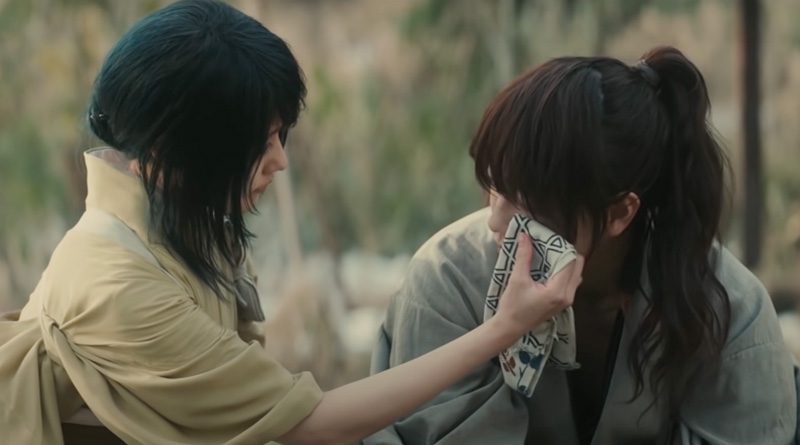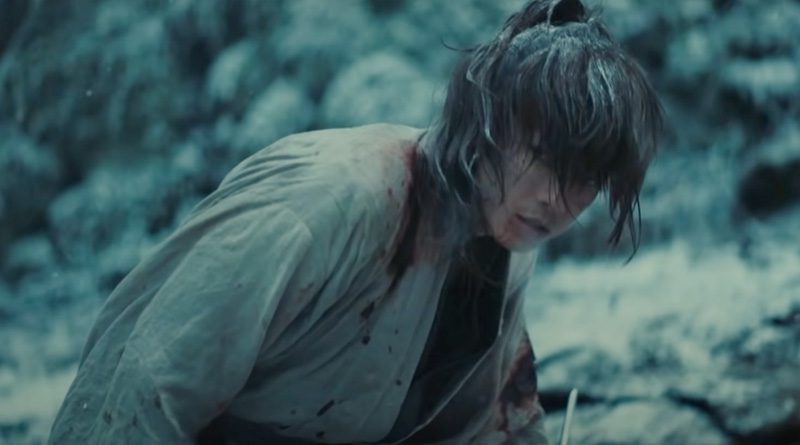Rurouni Kenshin: The Beginning るろうに剣心 最終章 (2021) Review
The fifth and final live-action Rurouni Kenshin saga has finally come to an end by going… back to the beginning, hence the subtitle. A prequel on how Himura Kenshin (Takeru Satoh) first got his cross-shaped sword scar on his left cheek and his ill-fated love with Tomoe (Kasumi Arimura). Both of them were already covered, albeit briefly in Rurouni Kenshin: The Final, which was also released this year.
I initially thought the prequel was unnecessary since Rurouni Kenshin: The Final has filled us in on what we need to know about Kenshin’s past. As mentioned earlier, it may have been brief but there are times not every film need to spell it out in detail by addressing it through a prequel treatment.
Even if returning writer-director Keishi Otomo insists on doing so, he should have shown Rurouni Kenshin: The Beginning before Rurouni Kenshin: The Final. It makes better sense since the subsequent dramatic and emotional impact would be more significant than the other way around. But by showing us the prequel after the event of Rurouni Kenshin: The Final, it feels more like an afterthought rather than something that made us — well, at least for me — emotionally invested in the fate of these primary characters related to Himura Kenshin and Tomoe.
But that doesn’t mean Rurouni Kenshin: The Beginning is a poorly executed film. The prequel has its few worthwhile moments, beginning with Otomo’s decision to give the film an appropriately sombre feel dominated with muted colours and gritty undertones that stand out from the previous four films. The film is considerably more violent and grounded with less intricate or stylised sword fights compared to its predecessors. And it’s understandably so because of the bleaker tone and nature of the storyline that leans heavily on pessimism and tragedy. Still, the sword-fighting moments are well-choreographed, which again showcases Kenshin’s impressive swift attack in drawing his katana and killed his opponents with just a few vital moves. The only gripe in the action area is the film’s tendency of overusing the obvious CG blood.

Otomo also brings out the best in his cast, notably Takeru Satoh’s stoic yet soulful turn as Himura Kenshin. His co-star, Kasumi Arimura deserves equal praise for her quietly affecting performance as Tomoe. With the exception of the earlier pacey moments of Kenshin involved in a few action sequences, the film moves deliberately slower once it focuses more on his gradual relationship with Tomoe. The slower-than-usual pacing might be a turn-off for those with short attention spans, with the film’s 137-minute length does tend to drag longer than usual. It’s kind of baffling that even after four Rurouni Kenshin films, Otomo’s penchant for overstretching his film still remains one of his biggest weaknesses. But other than that, Satoh and Arimura’s overall understated performances, coupled with their good onscreen chemistry between them, help prevent the film from becoming a total yawner.
Similar to Rurouni Kenshin: The Final, which made its theatrical debut in Japan in April before landing on Netflix a few months later in June, the prequel was originally screened in Japanese cinemas earlier (June 4, to exact) before it made its streaming debut on the aforementioned platform.
Rurouni Kenshin: The Beginning is currently streaming on Netflix.





